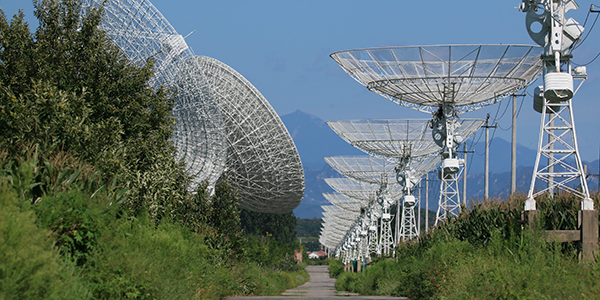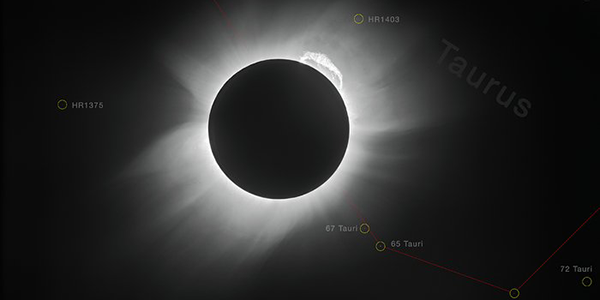Radio Science publishes original research articles on radio frequency electromagnetic-propagation and its applications.
Browse Articles
Burj Khalifa‐Inspired Reconfigurable Microstrip Patch Antenna for Wireless Solutions
- 31 January 2025
Key Points
-
A new microstrip patch antenna inspired by the iconic Burj Khalifa, Dubai's world's tallest skyscraper
-
Two additional designs are presented to adjust the resonance frequency, making it suitable for biomedical sensors, WIFI, and point-to-point microwave links
-
The antenna resonates at 4.8 GHz. The slotted short patch shifts the resonance to 3.1 GHz, and the varactor patch shifts the resonance frequency to 2.1 GHz. The DC reverse bias voltage of the varactors varies from 0 to 6 V, and the antenna frequency is reconfigurable over 2.1 GHz with a gain of 15.2 dB
Design and Optimization of a Low‐Cost 5‐m Radio Telescope at Princess Nourah University (PNU), Saudi Arabia
- 31 January 2025
Key Points
-
Our work presents the design and construction of a low-cost, 5-m radio telescope with optimized components, including a 19.63 m2 sensitivity, angular resolution and 35 dB gain, provide high-performance capabilities for observing the 1,420 MHz hydrogen line of neutral hydrogen
-
Key design choices, such as a focal length of 1.75 m and a feed horn with 6.47 dB directivity and 51% aperture efficiency, ensure minimal signal loss and effective illumination, balancing performance with affordability
-
The telescope's sensitivity, gain, and resolution were verified through simulations and experimental observations, confirming its suitability for educational and research applications in radio astronomy
Application of SuperDARN Interferometry for Improved Estimates of Doppler Velocity and Echo Geolocation
- 27 January 2025
Key Points
-
SuperDARN line-of-sight velocity is consistently lower than that measured by RISR radars in the same direction
-
SuperDARN velocity underestimation can be successfully corrected by elevation angle data for 0.5-hop HF propagation paths
-
Elevation-angle based echo geolocation improves accuracy of data comparison between SuperDARN and RISR radars
Angle and Polarization Insensitive RCS Reduction Metasurface Based on Hybrid Mechanism of Polarization Conversion and Absorption
- 21 January 2025
Key Points
-
An angle insensitive polarization conversion is achieved by metasurface unit cell through both polarization conversion and absorption
-
Based on the proposed unit cell, a wideband radar cross section (RCS) reduction is achieved up to a 45° oblique incident angle with a checkerboard metasurface
-
The proposed metasurface is more compact and thin compared with relevant works, while maintaining a comparable RCS reduction performance
A Novel Flexible Ultra Wide Band Wearable Slot Antenna With Defected Ground for WBAN Applications
- 16 January 2025
Key Points
-
This work deals with the use of flexible jeans material to attain UWB characteristics for the wearable antenna in wireless body area network applications
-
This design uses a circular shaped patch with circular shaped slots and four ellipses at its middle, and a defected ground plane
-
This design achieved a wide impedance bandwidth of more than 17 GHz with a compact size suitable for wearable applications
Agile Detection of DRM Signal via GLRT
- 14 January 2025
Key Points
-
The coherent integration of frequency pilots of Digital Radio Mondiale (DRM) is an attractive feature for signal detection that has been neglected before
-
Generalized Likelihood Ratio Test is an efficient tool to accelerate the signal detection of DRM signal
-
The proposed GLRT-based signal detection (GSD) method has smaller overhead, less computations and shorter processing delay compared with conventional method
Examining the Power Law Relationship Between Absorption and Frequency Using Spectral Riometer Data
- 4 January 2025
Key Points
-
Power law model of relationship between absorption and frequency is improved by varying the exponent as a function of activity level
-
Measured absorption at 30 MHz can be use as a proxy for local ionospheric disturbances during absorption events
-
Ambient electromagnetic noise impacts absorption frequency scaling most strongly at low frequencies
A Novel Blind Adaptive 3D Beam Steering Algorithm for Interference Mitigation and Performance Enhancement in Massive MIMO Systems
- 2 January 2025
Key Points
-
An innovative blind adaptive 3D beam steering algorithm is developed to enhance SINR in massive MIMO networks by mitigating interference
-
The proposed method employs an improved RD-MUSIC estimator, reducing the complexity of 2D-DoA estimation to a more efficient 1D search
-
The algorithm uses Dolph-Chebyshev weighting with nulling constraints to steer beams and block interference efficiently
Satellite radar interferometry: Two‐dimensional phase unwrapping
- Radio Science
- 713-720
- July-August 1988
Vegetation modeled as a water cloud
- Radio Science
- 357-364
- March-April 1978
A global mapping technique for GPS‐derived ionospheric total electron content measurements
- Radio Science
- 565-582
- 1 May 1998
Geodesy by radio interferometry: Effects of atmospheric modeling errors on estimates of baseline length
- Radio Science
- 1593-1607
- November-December 1985
Singular value decomposition methods for wave propagation analysis
- Radio Science
- 12 February 2003
Estimation of tropospheric delay for microwaves from surface weather data
- Radio Science
- 379-386
- May-June 1987
Statistics of total electron content depletions observed over the South American continent for the year 2008
- Radio Science
- 29 October 2011
Key Points
- First time regional plots of TEC depletions
- New numerical algorithm developed to automatically detect TEC depletions
- Day-to-day variability of TEC depletions in a regional basis
An improved equation for the radio refractive index of air
- Radio Science
- 803-807
- October 1974
Large ionospheric disturbances produced by the HAARP HF facility
- Radio Science
- 1081-1093
- 4 June 2016
Key Points
- HAARP facility produces unique results
- Artificial plasma clouds are emission and optical signatures
- Future HAARP experiments are needed to explain physics
Breast Cancer Detection Based on Simplified Deep Learning Technique With Histopathological Image Using BreaKHis Database
- Radio Science
- 21 November 2023
Key Points
-
The results of an investigation to determine effectiveness of deep learning (DL)-based systems for detecting breast cancer is presented
-
The strategy here for DL training uses various image processing techniques for extracting different feature patterns
-
It is shown that the convolutional neural network models provide different results for different degrees of image resolution
Accurate measurements of the dielectric constant of seawater at L band
- Radio Science
- 2-24
- 2 December 2015
Key Points
- Dielectric measurements of seawater are made with a microwave cavity at 1.413 GHz
- Measurements are made as a function of temperature and salinity for values found in open ocean
- Accuracy is better than 0.3 for both real and imaginary parts of the dielectric constant
Calculating the absorption of HF radio waves in the ionosphere
- Radio Science
- 767-783
- 5 June 2017
Key Points
- Either the Appleton-Hartree or Sen Wyller dispersion relation can be used to calculate absorption
- It is necessary to utilize the correct collision frequency specification for each dispersion relation
- Geophysical variations of collision frequency should be included in absorption calculations
A Review on Different Techniques of Mutual Coupling Reduction Between Elements of Any MIMO Antenna. Part 1: DGSs and Parasitic Structures
- Radio Science
- 4 February 2021
Key Points
-
Multiple-Input-Multiple-Output (MIMO) patch antenna is required for high data rate transmission without additional bandwidth requirement
-
Mutual coupling reduction among antenna elements is a significant challenge while designing a compact antenna array system
-
Defected Ground Structures and Parasitics elements/structures for mutual coupling reduction have been discussed thoroughly in this article
Plain Language Summary
A comprehensive two-part review article with more than 330 references is proposed.
Radio wave propagation through vegetation: Factors influencing signal attenuation
- Radio Science
- 7 October 2003
A review on array mutual coupling analysis
- Radio Science
- 8 April 2011
Key Points
- Beam coupling factors
- Array truncation
- Noise coupling
Artificial ionospheric modification: The Metal Oxide Space Cloud experiment
- Radio Science
- 539-558
- 3 May 2017
Key Points
- An overview of the 2013 Metal Oxide Space Cloud (MOSC) sounding rocket experiment from Kwajalein Atoll
- A comprehensive diagnosis of artificial plasma clouds generated through release of samarium vapor in the upper atmosphere
- Artificial modification of the radio frequency propagation environment
Fresnel Reflection and Transmission Coefficients for Temporally Dispersive Attenuative Media
- Radio Science
- 1382-1397
- 27 October 2018
Key Points
- General expressions for Fresnel reflection and transmission coefficients for homogeneous and inhomogeneous plane waves are derived for TE- and TM polarized plane waves in complex media with loss
- The critical angle for total internal reflection remains unchanged when material loss is included; the polarizing angle (for a TM polarized plane wave is changed otherwise, a pseudo Brewster's angle occurs at which the magnitude of the TM) polarization reflection coefficient is a minimum
- Total reflection at grazing incidence on the optically denser medium does not occur when both media exhibit loss; total reflection does not occur at critical incidence when both media exhibit loss.
Plain Language Summary
Amplitude reflection and transmission coefficients for a time-harmonic electromagnetic plane wave incident upon a plane interface separating two different lossy media are developed.








